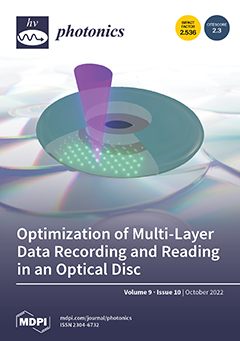In this work, compacts from mechanical mixtures of CaF
2 micron powder (MCP) with CaF
2 nanopowder (NP) additives were produced, with mass ratios of the mixture components ranging from 10:0.125 to 10:1, respectively, using magnetic pulse (MP) and static pressing (SP) methods.
[...] Read more.
In this work, compacts from mechanical mixtures of CaF
2 micron powder (MCP) with CaF
2 nanopowder (NP) additives were produced, with mass ratios of the mixture components ranging from 10:0.125 to 10:1, respectively, using magnetic pulse (MP) and static pressing (SP) methods. The effects of pressure (P
p) and pressing temperature (T
p), concentration and phase composition of the additive on the density and color of compacts were studied, taking into account the properties of the initial components of the mixtures. The evolution of pulsed cathodoluminescence (PCL) spectra and photoluminescence (PL) of compacts from pure powders and their mixtures depending on P
p, T
p and characteristics of initial CaF
2 NP was also studied. A new near-infrared (NIR) band associated with fluoride vacancies was discovered with a maximum at ~765 nm in PCL spectra of compacts produced by MP at a temperature of 425 °C. A blue band at 435 nm associated with impurity oxygen vacancies in the CaF
2 lattice was found in PL spectra compacts of pure NP and powder mixtures. The density of compacts of pure NP and MCP reached 89% of the theoretical density, and the density of compacts of mixtures did not exceed 78%. The defective structure and phase composition of the CaF
2 NP had a decisive effect on the luminescent properties of compacts from mixtures of micro- and nanopowders.
Full article





